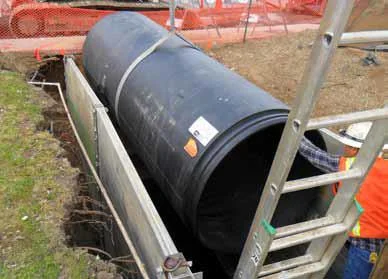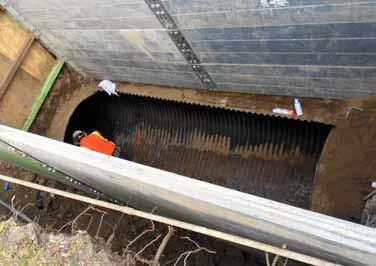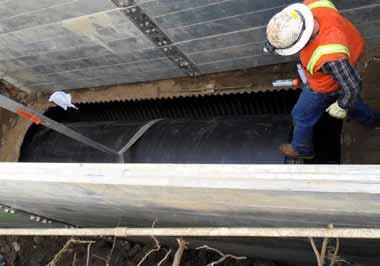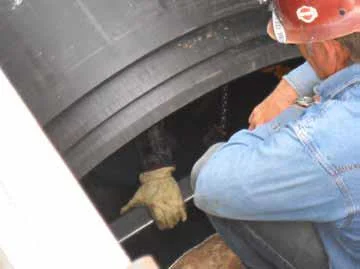Resources
Field Reports
Residential Street Spared with Snap-Tite® Culvert Reline




The Problem
The City of Santee, California needed to repair two failing 72-inch corrugated metal pipe (CMP) culverts located near a homeowner’s yard. Both culverts had deteriorated and one even started to cave-in on itself, forming a large sinkhole. The sinkhole disrupted water service to approximately 30 residents and initially blocked access to the road leading into the residential cul-de-sac. The sinkhole grew to 20 to 30 feet wide and four to six feet deep.
The city had been reviewing the status of its culverts because they had been installed before the city was incorporated, prior to 1981. Many needed to be updated or repaired.
For this project, the city did not want to dig up the residential street because it would further disrupt homeowner traffic. At least one lane needed to remain open for the residents to get in and out of their neighborhood.
The Solution
Mike Harriman, Snap-Tite® outside salesperson, worked with the city to determine a solution for rehabilitating the two CMP culverts without disturbing the road. Harriman suggested relining the CMPs with Snap-Tite® pipe liner. The Snap-Tite® culvert lining system is made of high-density polyethylene (HDPE) pipe. It has a patented male/female machining at each end of the HDPE pipe that is ‘snapped’ together, piece-by-piece, and pushed into the full length of an existing pipe. Any annular space and voids between the old culvert and new liner are filled in with grout.
The pipe liner is available in lengths from two feet to 50 feet, and is available for culverts with diameters from eight inches to 84 inches. Snap-Tite® also meets American Association of State Highway and Transportation Officials (AASHTO) Standard M326 for rehabilitating culverts.
The Installation
The pipe liner chosen for the project was 54-inch Snap-Tite®. The only way not to disturb the road or the residential property was to install the new liner inside a small pit. Typically, a Snap-Tite® installation occurs on the side of the road to reline a culvert, also avoiding the need to dig up a road.
In this case, eleven-foot sections of Snap-Tite® pipe were lowered into the pit. The pit was approximately 10-feet deep, 13-feet long and eight-feet wide. The Snap-Tite® pipe liner could not be snapped outside of the pit because there was no room to wrap the chains around and to place the come-alongs on the outside of the pipe. So the pipe was “snapped” inside the pit with the come-alongs and chains, which were attached to a bar the contractor manufactured for each end of the pipe.
This system worked very quickly and the installation was completed on time. The homeowner’s property was not disturbed and the road remained open to keep traffic moving.


